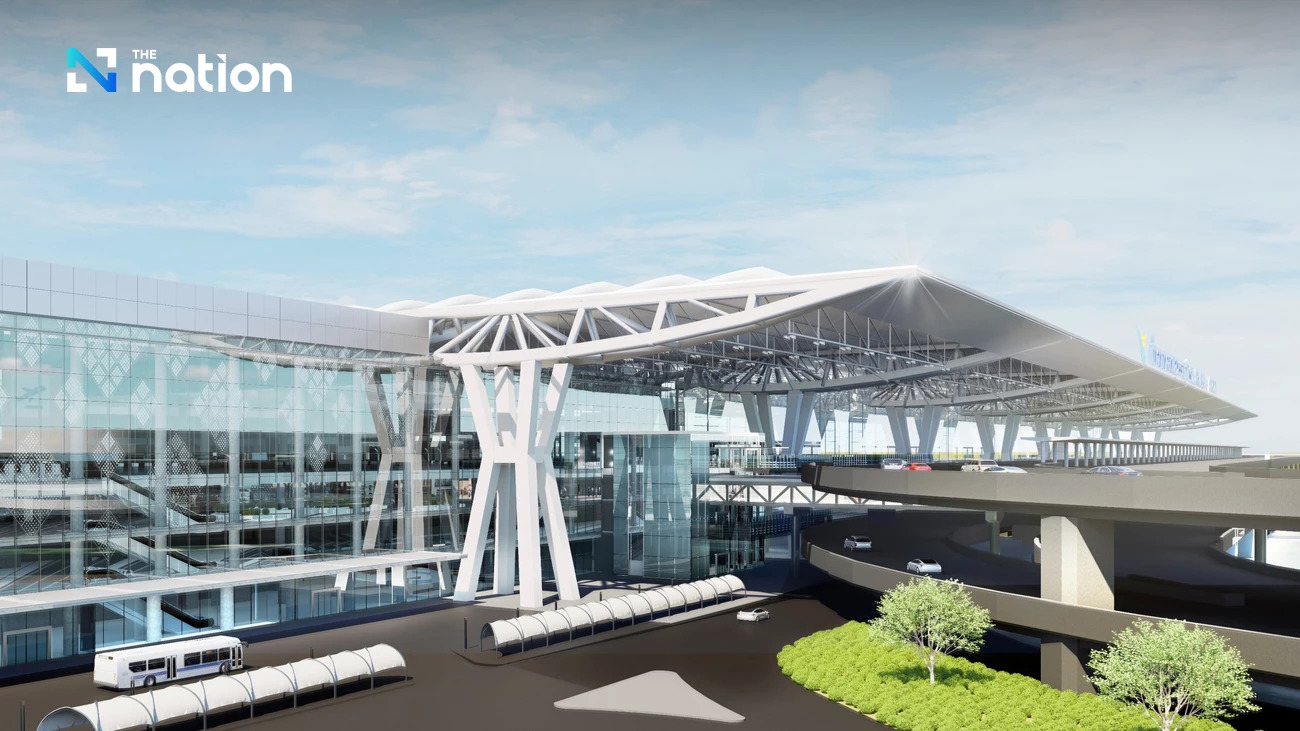 Thailand’s Airports of Thailand (AOT) Reports Record Growth as Airport Expansion Plans Accelerate
Thailand’s Airports of Thailand (AOT) Reports Record Growth as Airport Expansion Plans Accelerate
Airports of Thailand (AOT) reported a 9.2% increase in passenger traffic, serving 88.53 million passengers across its six major airports during the first eight months of fiscal year 2025.
The company is accelerating a major infrastructure development program across all its facilities to accommodate future growth and establish Thailand as a regional aviation hub.
Key expansion projects include increasing Suvarnabhumi Airport’s capacity to 80 million passengers by 2030 and constructing a new international terminal at Don Mueang Airport, with significant upgrades also planned for airports in Phuket, Chiang Mai, and Chiang Rai.
Thailand’s state-owned airport operator has reported significant passenger growth across its six major facilities whilst unveiling ambitious expansion plans designed to cement the kingdom’s position as a regional aviation hub.
Airports of Thailand Public Company Limited (AOT) announced that its airports collectively served 88.53 million passengers during the first eight months of fiscal year 2025, representing a 9.2% increase compared to the same period last year.
The milestone comes as the organisation marks its 46th anniversary and accelerates infrastructure development across all facilities.
Paweena Jariyathitipong, acting president of AOT, said the growth demonstrates the resilience of Thailand’s aviation sector and the organisation’s commitment to enhancing the country’s air transport infrastructure to meet international standards.
Strong Recovery Across All Airports
The passenger surge comprised 54.24 million international travellers—up 10.8%—and 34.29 million domestic passengers, marking a 6.9% increase. Flight operations also expanded significantly, with 544,590 total movements representing 10.9% growth year-on-year.
International flights accounted for 308,777 operations, up 12.5%, whilst domestic flights totalled 235,813, an 8.9% increase from the previous year.
AOT projects that passenger numbers will exceed 130 million in the fiscal year 2026, with more than 859,000 flights anticipated. Cargo and postal volumes are forecast to reach approximately 1.64 million tonnes.
The six airports under AOT’s management include Suvarnabhumi Airport (BKK), Don Mueang International Airport (DMK), Chiang Mai International Airport (CNX), Mae Fah Luang-Chiang Rai International Airport (CEI), Phuket International Airport (HKT), and Hat Yai International Airport (HDY).
AOT has implemented what it terms a “World Class Hospitality” approach, emphasising exceptional service quality and genuine Thai hospitality whilst maintaining maximum safety standards throughout the passenger journey.
Performance data indicates strong operational efficiency across the network. At Suvarnabhumi Airport, international arrival processing averages 21 minutes, with international departures taking 27 minutes. Domestic operations are even more efficient, with arrivals processed in 14 minutes and departures in 15 minutes.
Don Mueang International Airport demonstrates similar efficiency levels, with international arrivals averaging 21 minutes and departures 22 minutes. Domestic operations are particularly swift, with arrivals processed in eight minutes and departures in 10 minutes.
The operator is modernising airport spaces to create open, bright, and relaxing environments responsive to contemporary passenger lifestyles.
Improvements include enhanced terminal zoning, recreational areas, children’s play zones, comfortable waiting spaces, additional charging stations, and displays showcasing Thai and international arts and culture.
 Major Infrastructure Expansion Programme
Major Infrastructure Expansion Programme
AOT has outlined extensive development plans designed to accommodate projected passenger growth across all six facilities over the coming decade.
Suvarnabhumi Airport, Thailand’s busiest facility, will see accelerated construction of its East Expansion project, targeting completion by 2030. The development will increase capacity from the current 65 million passengers annually to 80 million.
The airport’s master plan is currently under review, with completion expected later this year. Subsequently, AOT will begin developing the South Terminal and a fourth runway at Suvarnabhumi.
Currently, Concourse C is undergoing renovation to include new amenities for all age groups, including Kids and Gaming Zones, Relaxing Zones, Co-Working Spaces, and Digital Park Seats.
This area will become operational in 2026, with restroom upgrades and other facility improvements scheduled for completion by 2028.
Don Mueang International Airport expects to commence Terminal 3 construction by 2026, with the new facility projected to open by 2030 to accommodate international passengers. Terminal 1 renovation for domestic operations is planned for completion by 2032.
Chiang Mai International Airport will undergo comprehensive renovation, expected to conclude by 2033, increasing the facility’s capacity to handle 20 million passengers annually.
Phuket International Airport will construct an International Passenger Terminal extension, scheduled for completion by 2030, boosting capacity to 18 million passengers per year.
Mae Fah Luang-Chiang Rai International Airport plans to double passenger handling capacity from three million to six million annually, with expansion work expected to finish by 2033.
Commercial Development Strategy
Beyond infrastructure investment, AOT is diversifying revenue streams through commercial property development around its airport facilities. The organisation held an AOT Property Showcase in April 2025, attracting significant interest from domestic and international investors.
Twenty-eight project proposals were submitted, covering diverse business areas including hotels, maintenance and repair facilities, private jet terminals, logistics hubs, training centres, electric vehicle repair facilities, car showrooms, EV charging stations, and terminal attraction projects.
Paweena emphasised that whilst AOT continues investing in infrastructure and passenger services to support its regional aviation hub ambitions and increase aeronautical revenue, the organisation also seeks to diversify income streams for financial resilience and long-term sustainability.
 Economic Impact and Future Outlook
Economic Impact and Future Outlook
The expansion programme underscores AOT’s vital role in Thailand’s air transport system and its contribution to the country’s economic growth.
The organisation supports the tourism and service industries—key drivers of the Thai economy—whilst promoting both aeronautical and non-aeronautical businesses to generate economic value and enhance national competitiveness.
Paweena reiterated AOT’s commitment to continuous development, aiming to deliver world-class travel experiences through excellence in infrastructure, service, and innovation.
The organisation remains dedicated to ensuring that air travel in Thailand remains convenient, safe, modern, and passenger-friendly.
The comprehensive development programme positions AOT as a leader in airport management and highlights its strategic importance to Thailand’s continued economic growth as the kingdom seeks to establish itself as Southeast Asia’s premier aviation hub.
Source: https://www.nationthailand.com/business/corporate/40055094




